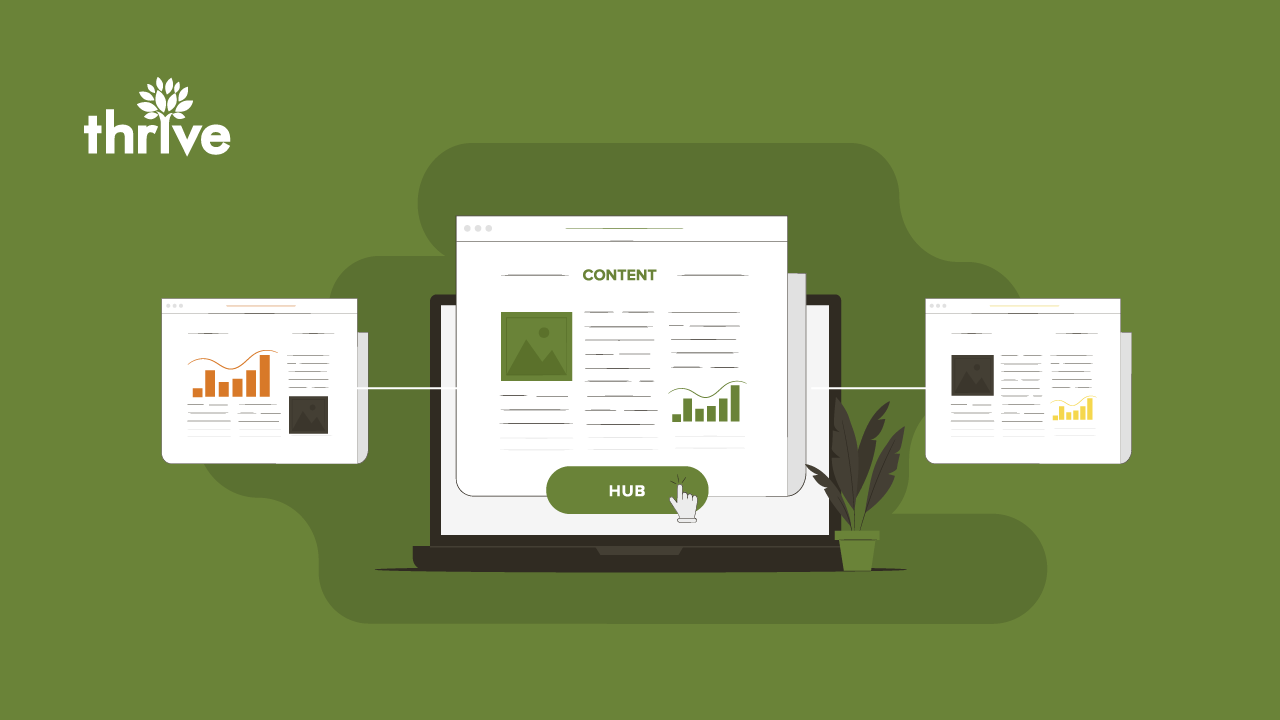When done right, a content hub can be your chief source of organic website traffic and conversions, but it can be complex to begin with. And for that reason, many brands do not concern themselves with curating a content hub. If you’re on the fence, this blog will look at what a content hub is, its benefits and how you can create one.
What Is a Content Hub?
A content hub, also referred to as a content cluster, is a centralized repository of interlinked content tackling a similar topic. It serves as comprehensive coverage, addressing a user’s concerns about a subject.
Content clusters or hubs have three key components:
• Hub page or pillar content is a high-level overview of a broad topic.
• Subpages or cluster content are exhaustive guides of subtopics.
• Hyperlinks serve as the connection between the hub page and the subpages.
In contrast to blogs, content hub pages’ objective is not centered on delivering fresh content regularly. Rather, the emphasis is on curating and assembling existing and new content on a subject in a single location that results in high organic website traffic. Content hubs or hub pages sometimes come in the form of “information hubs” or “resource centers.”
How Does Having a Content Hub Benefit Your SEO Traffic
Visitors see a website’s value as higher when it provides rich content structured in a distinctive style while directly addressing user intent. Therefore, content hubs lead to better quality and higher SEO traffic since they often serve as the most helpful online resource on a topic. The high SEO traffic entails the following:
Higher Topical Authority
Topical authority can be defined as a website’s perceived authority or depth of expertise in a particular subject. To be regarded by Google as a “topical authority,” you must identify and write about each talking point concerning a topic, resulting in top-quality content. Google’s main objective is to quickly address user intent with the most relevant answers to search queries. Creating content hub pages can lead search engines to view your site as authoritative regarding a specific topic.
Stronger Link Authority
Naturally, a high-quality content hub and its subpages will earn backlinks in the long run. Also known as inbound links, backlinks are links on a page that leads to a different website. More than your organic website traffic, backlinks promote your page’s “link authority,” which is then partly transmitted to all interlinked pages in the hub. But Google removed public PageRank scores in 2016, so you could no longer check your PageRank score. To measure your link authority, Ahrefs’ URL Rating (UR) operates on relative premises that of PageRank.
Better Engagement
Whether a user came for the pillar content or subpages of a hub, the interlinked structure of content hub pages increases the likelihood of your website visitors consuming several contents in one visit. And since hubs contain different types of content, such as videos and infographics, some SEO specialists believe that the high engagement and time on site may send positive ranking signals to Google.
But what is a content hub and its valuable benefits without knowing how to create one? If you have your hands full running a business, partnering with the best search engine optimization company that specializes in SEO content writing services could be a wise choice. Otherwise, below are simple steps on how to create a content hub.
How To Create a Content Hub
Building a content cluster demands planning and persistence. While the lead time varies depending on the depth of the topic and the resource you have on hand, some SEO specialists create a hub for an entire quarter.
1. Brainstorm and Identify the Main Topic for the Hub Page
Your main offerings, whether a product or service, are the top inspiration for your hub page. With that, you can perform a search query of your main topic on search engines like Google; pay attention to sections “People also ask” and “Related searches.” For more data-driven research, you can use tools for technical SEO services such as Ahrefs Keyword Explorer or Semrush’s Keyword Overview.
For instance, if you sell soy candles online, input “soy candles” in any of those tools. While you can trust both tools to provide further information on keywords relevant to your business, not all will fit your content cluster. So keep these in mind:
• Informational user intent – the topic should be educational.
• High search volume or traffic potential – the topic has a lot of interest.
• Broad enough – the topic has a lot of subtopics.
2. Select the Subtopics for the Subpages
Considering your main topic, you can derive subtopics either from the sections on Google Search I mentioned above or further using the tools for SEO content writing services. So, for example, if your pillar content is all about “how to make soy candles,” you’ll likely pull subtopics like:
• how to mix soy candles with essential oils
• how to make scented soy candles
• how to make soy candles smell stronger
Be thoughtful when selecting subtopics, and refrain from undertaking every subject related to your pillar content. For instance, even though “kinds of wax for candles” are related to “candles,” it wouldn’t add value to your main topic since you’ve already determined a specific wax to use: soy. Similar to your pillar content, aim for subtopics with a metric combination of low-ranking difficulty and high search volume for sure results.
3. Link the Hub Page to the Subpages
Once you’ve produced and organized your content in-house or with the help of an SEO content writing services agency, it’s time for internal hyperlinking. Internal linking is the linchpin of any content hub, so if you don’t link your hub page and subpages together, your hub will be just another blog post. The most common linking structure in a content hub uses a custom table of contents. While custom table content is straightforward from a user and an SEO specialist’s perspective, it can be heavy to execute on the development side.
As such, to guarantee proper linking implementation that leads to real results, consider partnering with an expert specializing in technical SEO services.
Pro tip: Leverage your existing blogs and pages. Still taking the “soy candles” as an example, revisit everything you wrote about soy candles. Then, you can simply link to those existing posts once you’ve created a hub. Additionally, you can repurpose some of your old content and turn them into infographics or videos to add variety to your content hub and provide a more immersive user experience.
Thrive: The Best Search Engine Optimization Company To Curate Top Quality Content Cluster
To sum up, a content hub or cluster opens the door for you to become a trusted source of information online on key topics pertinent to your brand. While the guide above centered on the “hub and spoke” approach, there are many types of content hubs to explore. So if a table of content wouldn’t fit your website style and objectives, it’s not the end of the road. With time and effort invested in SEO content writing services, your website will top the search results as you provide centralized content that adds value to your audience.
And that’s what Thrive is all about, providing value. Thrive comprises experts in content writing and technical SEO. Our expertise and premium tools enable our clients to produce carefully structured content that users and search engines find reliable, leading to more traffic, backlinks, conversions and authority.
Talk to Thrive’s SEO specialist — let your site climb the ranks!





